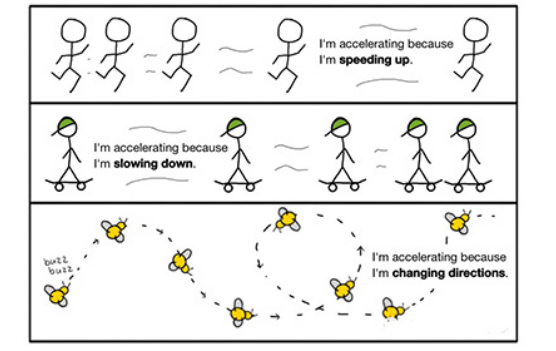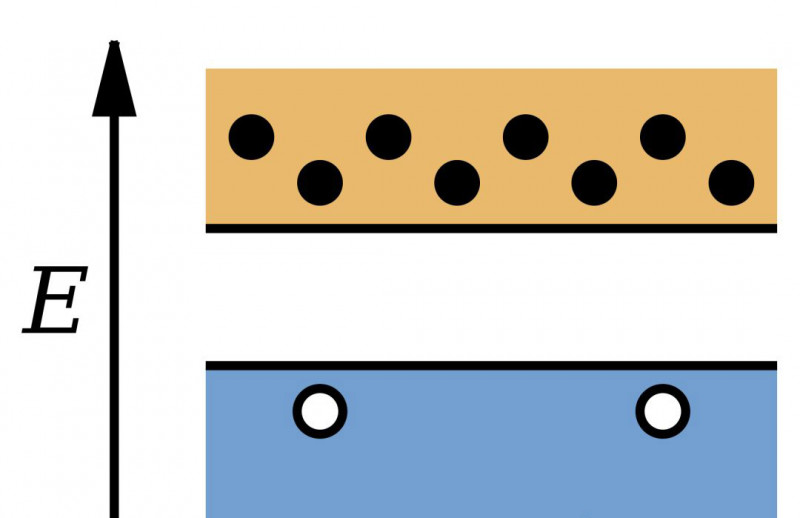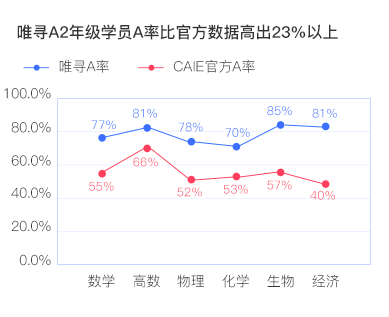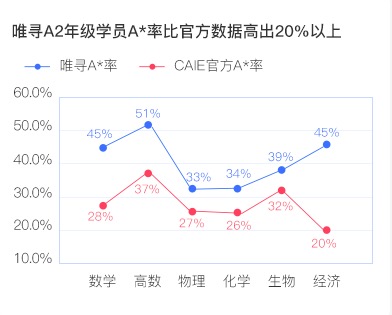
虽然英国地区2021GCSE、ALEVEL大考已经确认取消了,但不论是国际生还是本土考生的学习都不能停啊。因为就算大考取消,也会有模考、预估分、备用卷各种大招等着你。只有更强大的知识储备才能助力你无论任何情况都能拿下高分。本文就来给大家整理一下AS物理考试核心定义,快拿去为你的预习和复习助攻吧。
(点击阅读2021年GCSE/ALEVEL考试官宣取消,一夜封城后国内外考生如何应对焦虑?)
Measurement:
Random errors are errorsof measurements in which the measured quantities differ from the mean valuewith different magnitudes and directions.
Systematic errors are errors of measurements in which the measured quantitiesare displaced from the true value by fixed magnitude and in the same direction.
Accuracy is ameasure of how close the results of an experiment agree with the true value.
Precision is ameasure of how close the results of an experiment agree with each other.

Kinematics:
Speed is the rate ofchange of distance traveled with respect to time.
Velocity is therate of change of its displacement with respect to time.
Acceleration ofan object is the rate of change of its velocity with respect to time.
Forces And Dynamics:
Normal contact force is aforce perpendicular to the surface experienced by a body when it is in physicalcontact with something else.
Hooke’sLaw states that within the limit of proportionality, theextension produced in a material is directly proportional to the load applied.
The principle of moments states that,when an object is in equilibrium, the sum of anticlockwise moments about anypoint equals the sum of clockwise moments about the same point.
The moment of a force is the productof the force and the perpendicular distance between the axis of rotation andthe line of action of the force.
A couple is a pair of forces, equalin magnitude but opposite in direction, whose lines of motion do not coincide.
Centreof gravity is the point on an object through which the entire weight ofthe object may be considered to act.
Stability ofan object refers to its ability to return to its original position after it hasbeen displaced from that position.
Pressure isforce acting per unit area.
Upthrust/buoyancyforce is an upward force on a body produced by the surroundingfluid (i.e., a liquid or a gas) in which it is fully or partially immersed, dueto the pressure difference of the fluid between the top and bottom of theobject.
Archimedes’Principle states that the upthrust experienced by an object partiallyor entirely immersed in a fluid is equal to the weight of the fluid displacedby the object.
Newton’sfirst law of motion states that a body will continue in its state of rest oruniform motion in a straight line unless an external resultant force acts onit.
Newton’ssecond law states that the rate of change of momentum of a body isproportional to the resultant force acting on it and the change takes place inthe direction of the force.
Newton’sthird law states that: If body A exerts a force on body B, then body Bexerts a force of equal magnitude but in the opposite direction on body A.
The principle of conservation of momentum statesthat the total momentum of a system of objects remains constant provided noresultant external force acts on the system.
Work, Energy And Power:
Work is the mechanicaltransfer of energy to a system or from a system by an external force on it.
Heat isthe non-mechanical transfer of energy from the environment to the system or fromthe system to the environment because of a temperature difference between thetwo.
The principle of conservation of energy statesthat energy cannot be created nor destroyed in any process.
GravitationalPotential Energy is defined as the amount of work done in order to raise thebody to the height h from a reference level.
Power isdefined as the rate of work done or energy converted with respect to time.
Waves:
Displacement is thedistance moved by the particle from its equilibrium position.
The amplitude of a wave is the maximumdisplacement of the particle from its equilibrium position.
The wavelength is the distance between2 successive points on a wave which are in phase with one another.
The period is the time taken for aparticle on the wave to complete one oscillation.
The frequency of a wave is the numberof complete oscillations that pass through a given point in 1 second. (Units:Hertz(Hz) or s-1)
A compression is a region whereparticles are close to one another. (High pressure)
A rarefaction is a region where theparticles are further apart. (Low pressure)
PhaseDifference (φ) between two particles or two waves tells us how much aparticle (or wave) is in front or behind another particle (or wave).
Intensity of awave is the rate of transfer of energy per unit area perpendicular to thedirection of travel of the wave.
Superposition:
Diffraction refers to thebending or spreading out of waves when they travel through a small opening orwhen they pass round a small obstacle.
The Principle Of Superposition statesthat when two waves of the same kind meet at a point in space, the resultantdisplacement at that point is the vector sum of the displacements that the twowaves would separately produce at that point.
Interference refersto the superposing of two or more coherent waves to produce regions of maximaand minima in space, according to the principle of superposition.
Gravitation:
Newton’s Law Of Universal Gravitation statesthat every particle in the Universe attracts every other particle with a forcethat is directly proportional to the product of their masses and inverselyproportional to the square of the distance between them.
Gravitational field strength at a point is defined as the gravitational force per unitmass acting on a mass placed at that point.
Gravitational potential energy, U of a point mass m, in a gravitational field, is the work doneby an external force in bringing that point mass from infinity to that point.
Gravitational potential at a point in a gravitational field is the work done perunit mass, by an external force, in bringing the mass from infinity to thatpoint.
Escape speed is the minimum speed with which a mass should be projectedfrom the Earth’s surface in order to escape Earth’s gravitation field.
Current Of Electricity:
Electric Current is therate of flow of charge through a particular cross sectional area with respectto time.
The potential difference between twopoints in an electrical circuit is the electrical energy converted into otherforms of energy per unit charge passing from one point to the other.
Onevolt is the potential difference between two points in anelectrical circuit when one joule of electrical energy is converted to otherform of energy as one coulomb of charge passes from one point to the other.
Ohm’sLaw states that the ratio of the potential difference across aconductor to the current flowing through it, is a constant, provided that itsphysical conditions, such as temperature, remain constant.
The electromotive force ($\epsilon$)of a source is the energy converted from other forms to electrical per unitcharge delivered round a complete circuit.
Internalresistance (r) of any real source is the resistance that charge movingthrough the material of the source encounters.
DC Circuits:
Kirchhoff’s First Law statesthat the total current entering a junction is equal to the total currentleaving the junction. OR The algebraic sum of currents at a junction is zero.
Kirchhoff’ssecond law states that the net electromotive force around a closedcircuit loop is equal to the sum of potential drops around the loop. OR Thealgebraic sum of the changes in potential encountered in a complete traversalof a closed circuit loop must be zero.
AlternatingCurrent:
The root-mean-square (r.m.s.) value of analternating current is equivalent to the steady direct currentthat converts electrical energy to other forms of energy at the same averagerate as the alternating current in a given resistance.
Rectification isthe process in which an alternating current is forced to only flow in onedirection.

Semiconductors:
Bandgap is the energy difference between top of valence band andbottom of conduction band. It is also a range of energy in a solid where noelectron states exist.
An intrinsic semiconductor is a puresemiconductor crystal containing only one element or one compound.
Extrinsicsemiconductors doped with donor impurities are called n-type semiconductors because theydonate an excess of negative charge carriers.
Quantum Physics & Lasers:
PhotoelectricEffect is the emission of electrons from metal by electromagneticradiation.
Photoelectron isused to indicate that the electron has been emitted when light falls on thesurface of a metal.
The work function of a material isdefined as the minimum amount of the work necessary to remove a free electronfrom the surface of the material.
Thresholdfrequency is the minimum frequency of an incident radiation requiredto just remove an electron from the surface of a metal.
The scanning tunnelling microsope (STM)is a non-optical microscope which uses the concept of quantum tunnelling byelectrons to study surfaces of conductors or semi-conducors at the atomic scaleof about 2 Å or 0.2 nm.
AS物理考试定义整理就到这里,希望能帮助你理清学习思路,更精准地定位考点。
虽然2021中国ALEVEL考试尚未受到影响,但基于这两年情况特殊,不论是中国还是英国本土考生,都要做好两手准备——
一方面好好应对校内考试,以防取消考试让平时成绩拖后腿;另一方面如果考试不取消,则好好准复习试,考出好成绩,增加申请优势。如果你想让ALEVEL分数更上一层楼,点击预约试听【唯寻ALEVEL同步培训班】,唯寻教学天团授课,根据学校进度定制课程,根据不同考试局整理高频考点,学年难点稳步攻克,A*/A率全面领先考试局平均分数线。

唯寻学员。
。


更多ALEVEL学习攻略点击

学习有方法,成长看得见
筑梦牛剑/G5/常春藤
